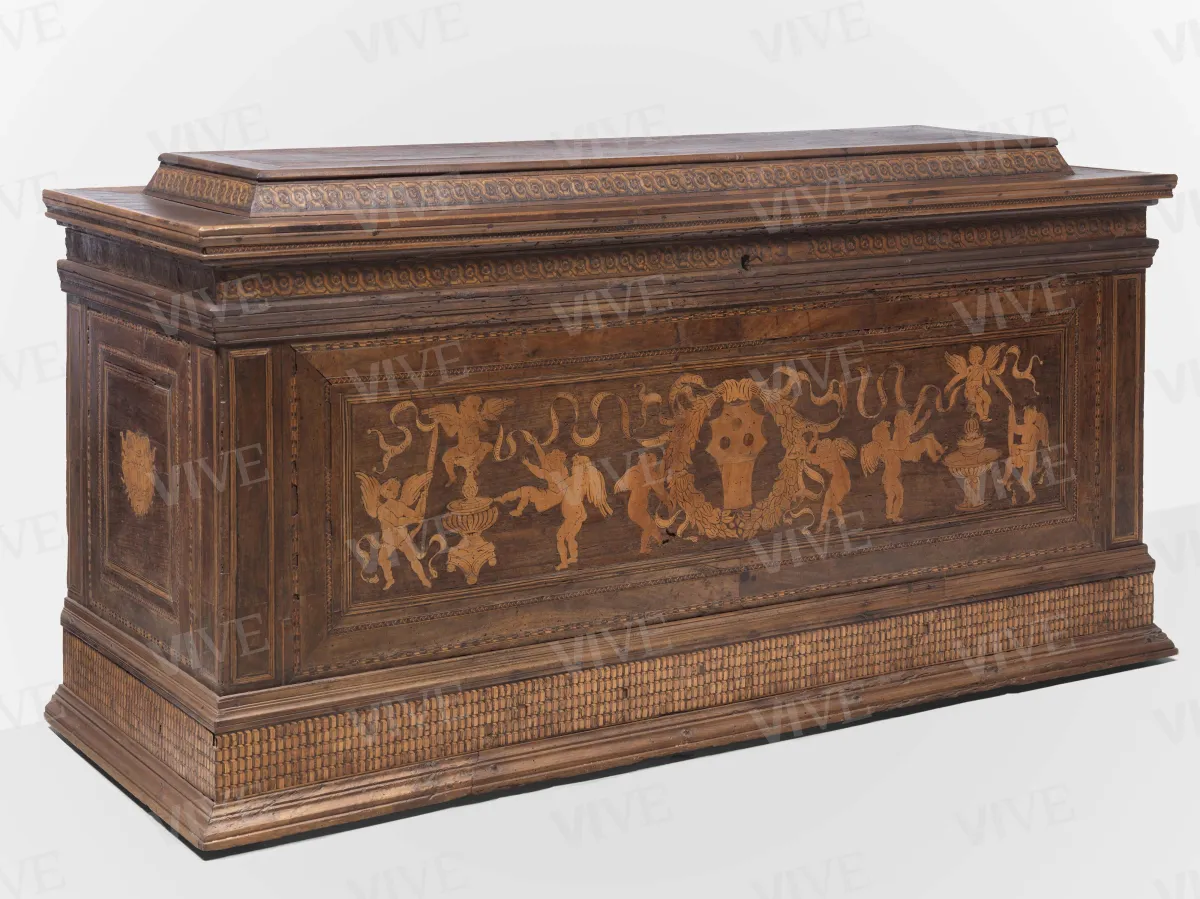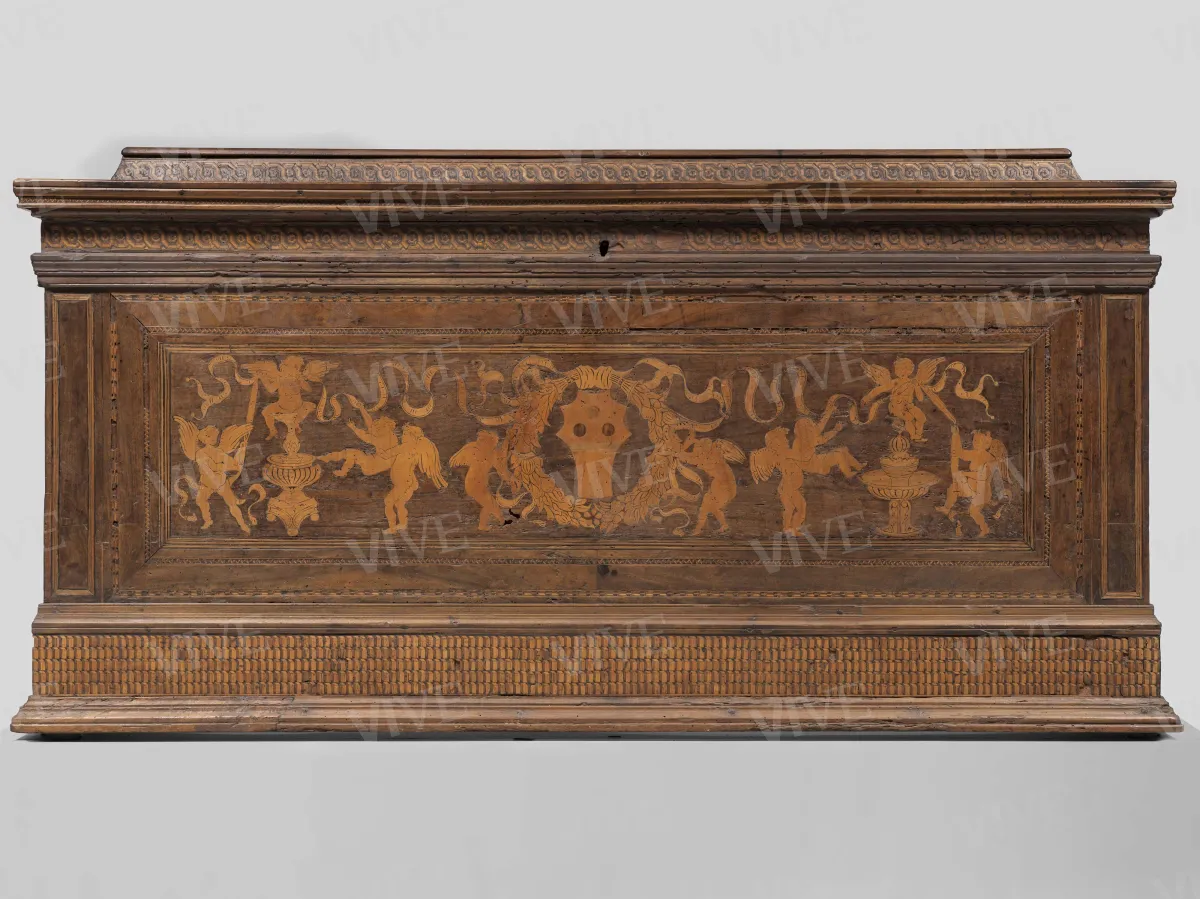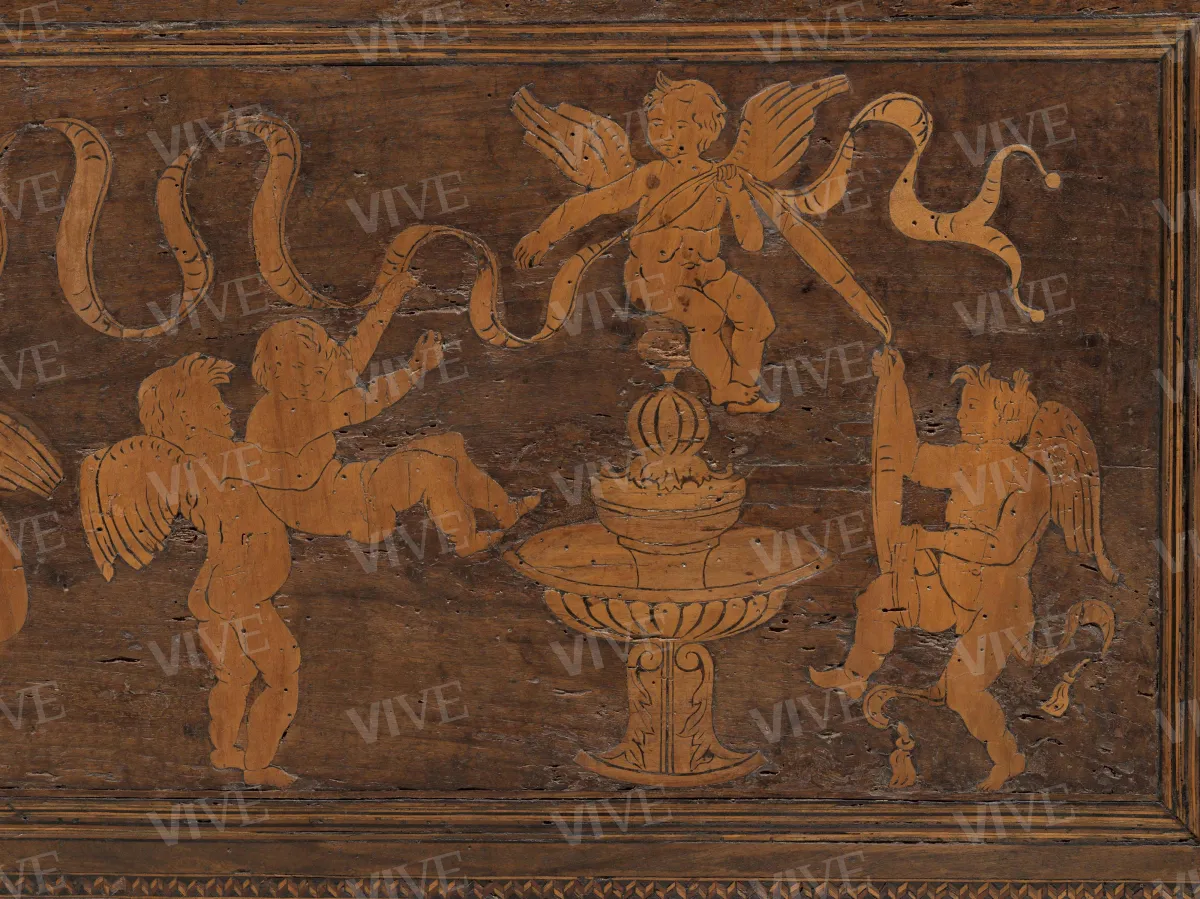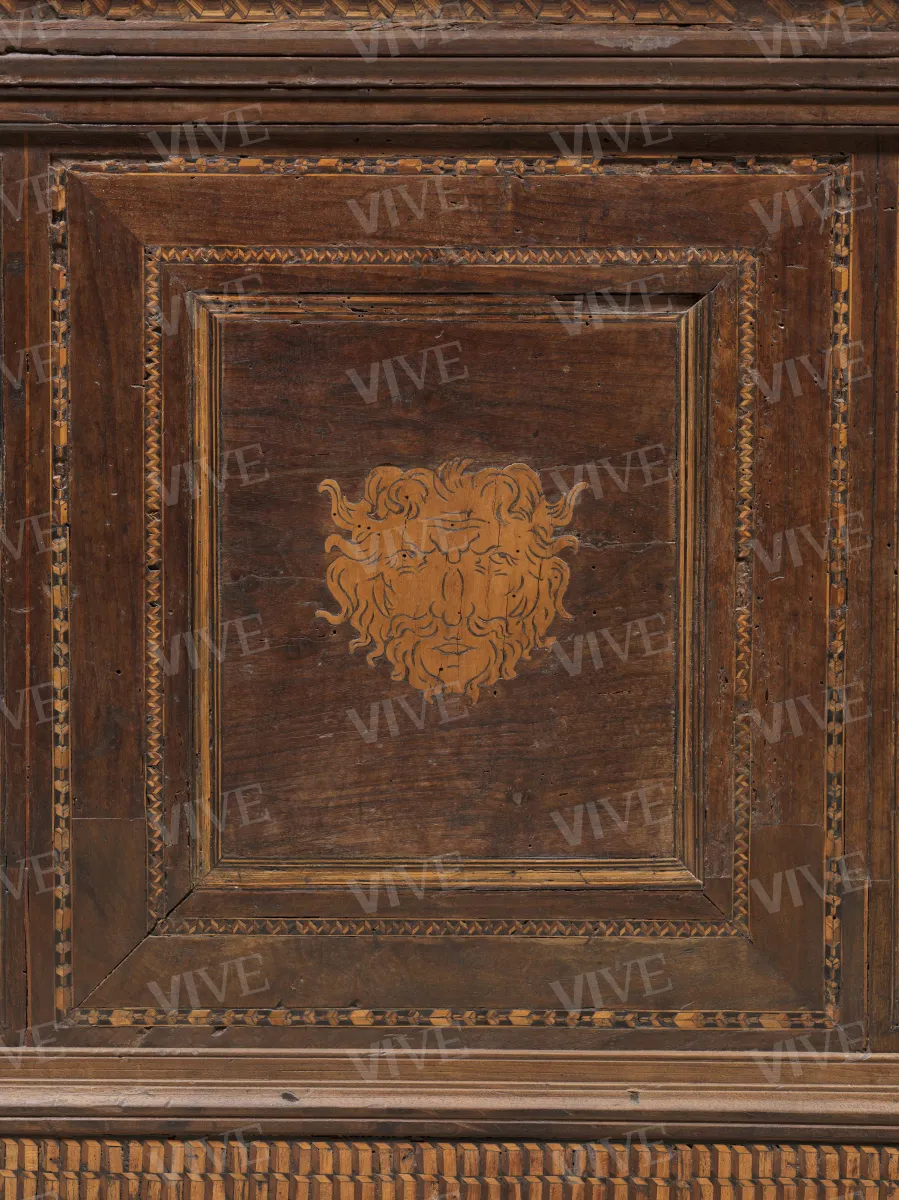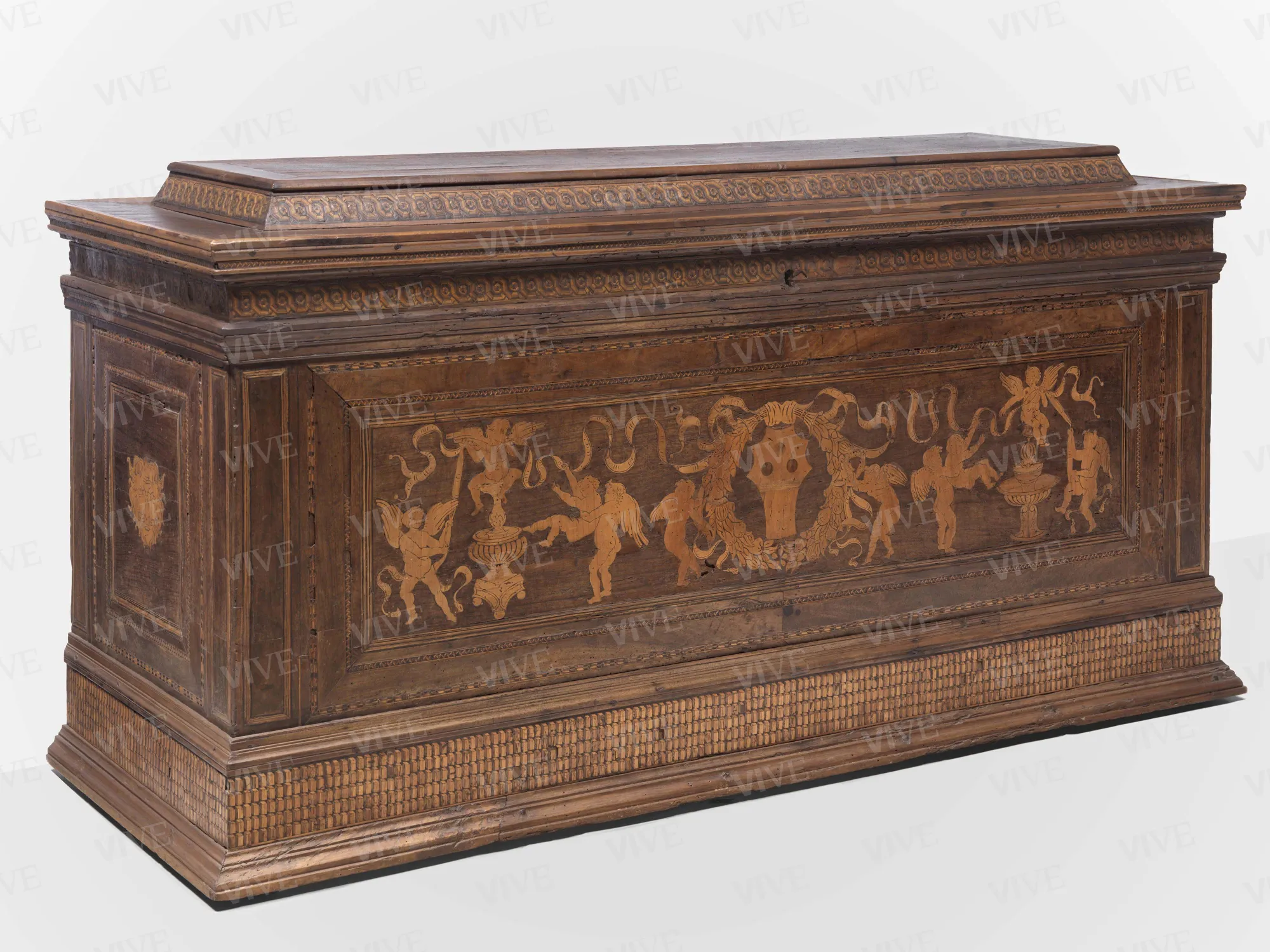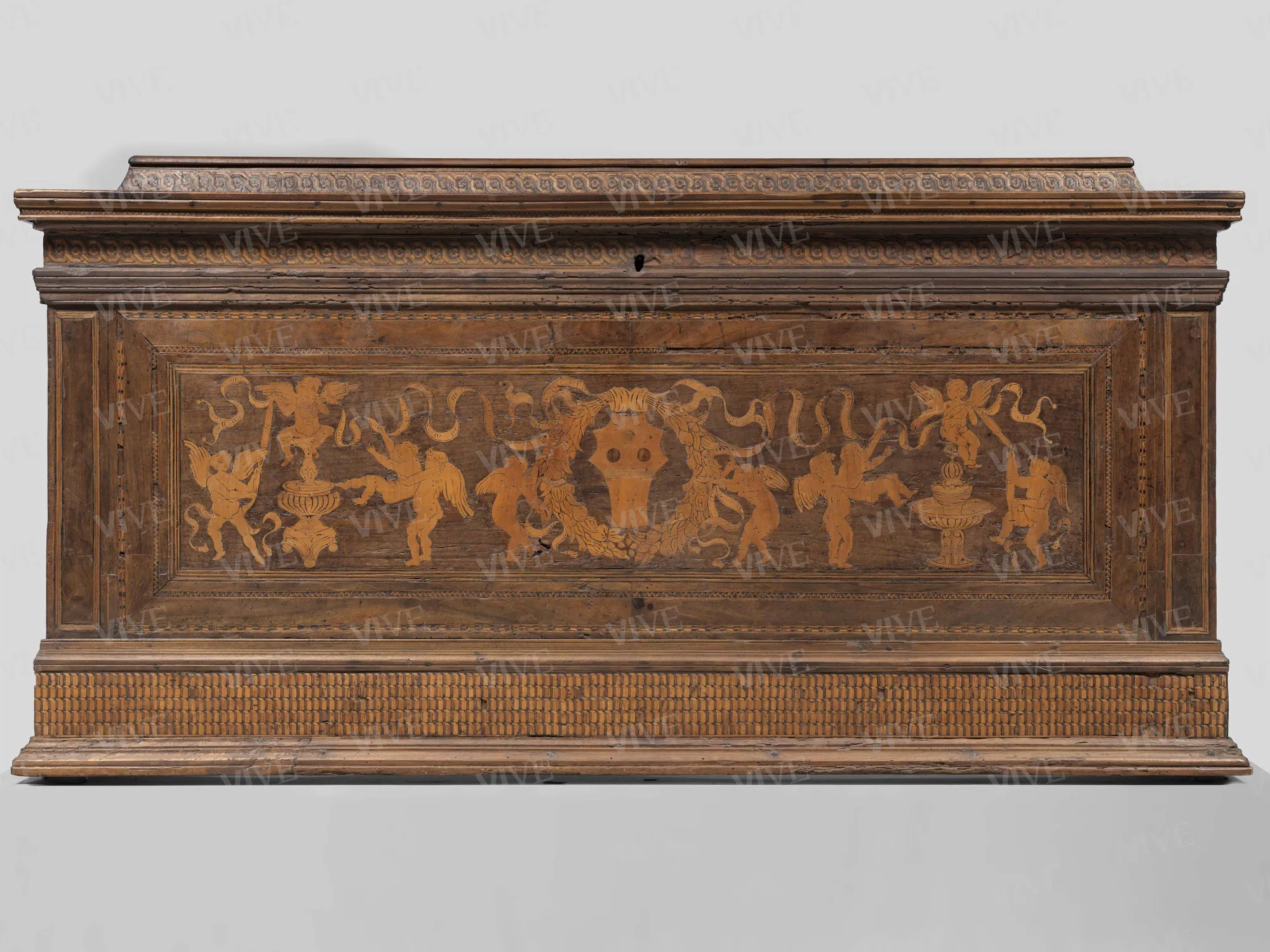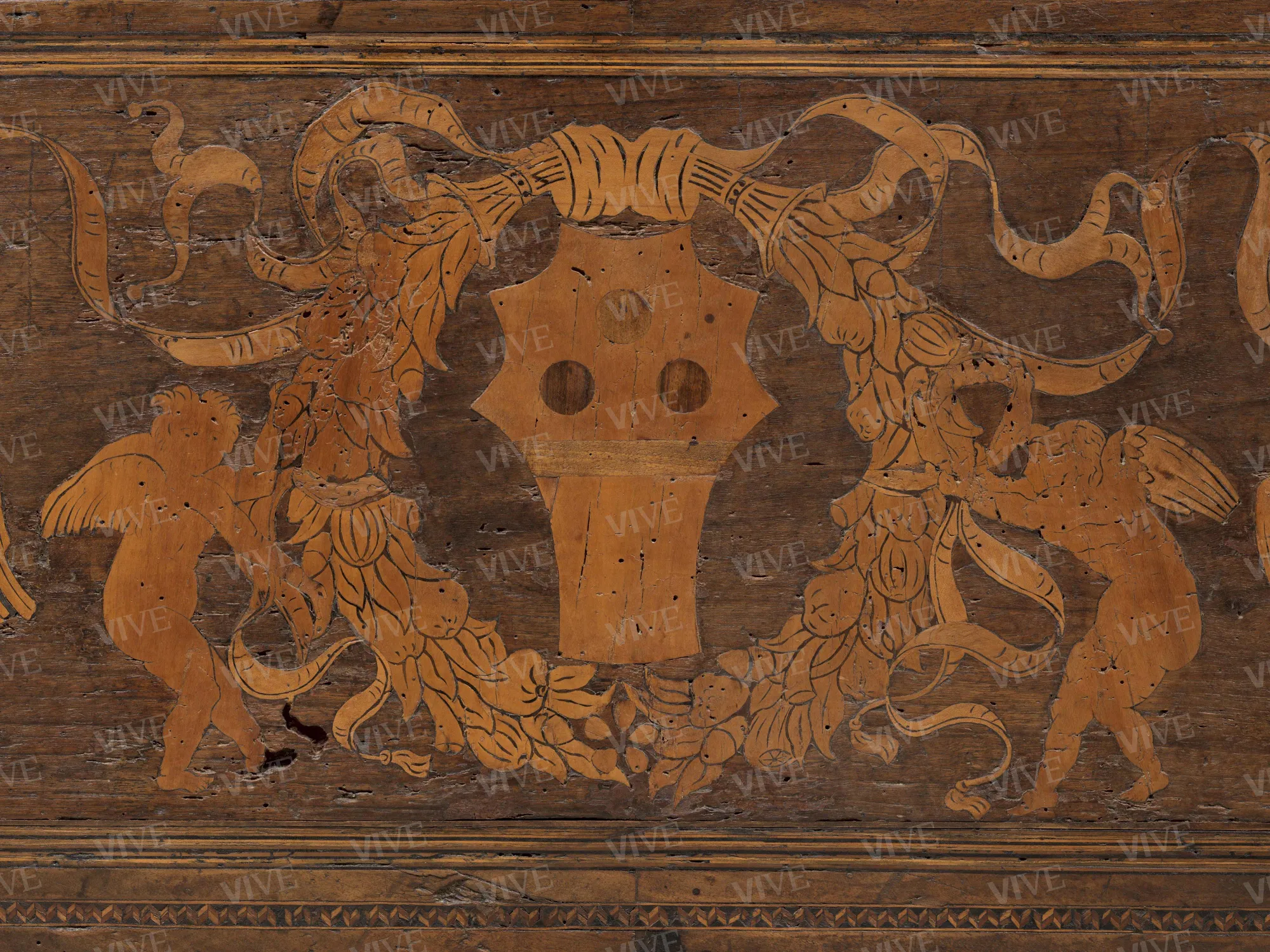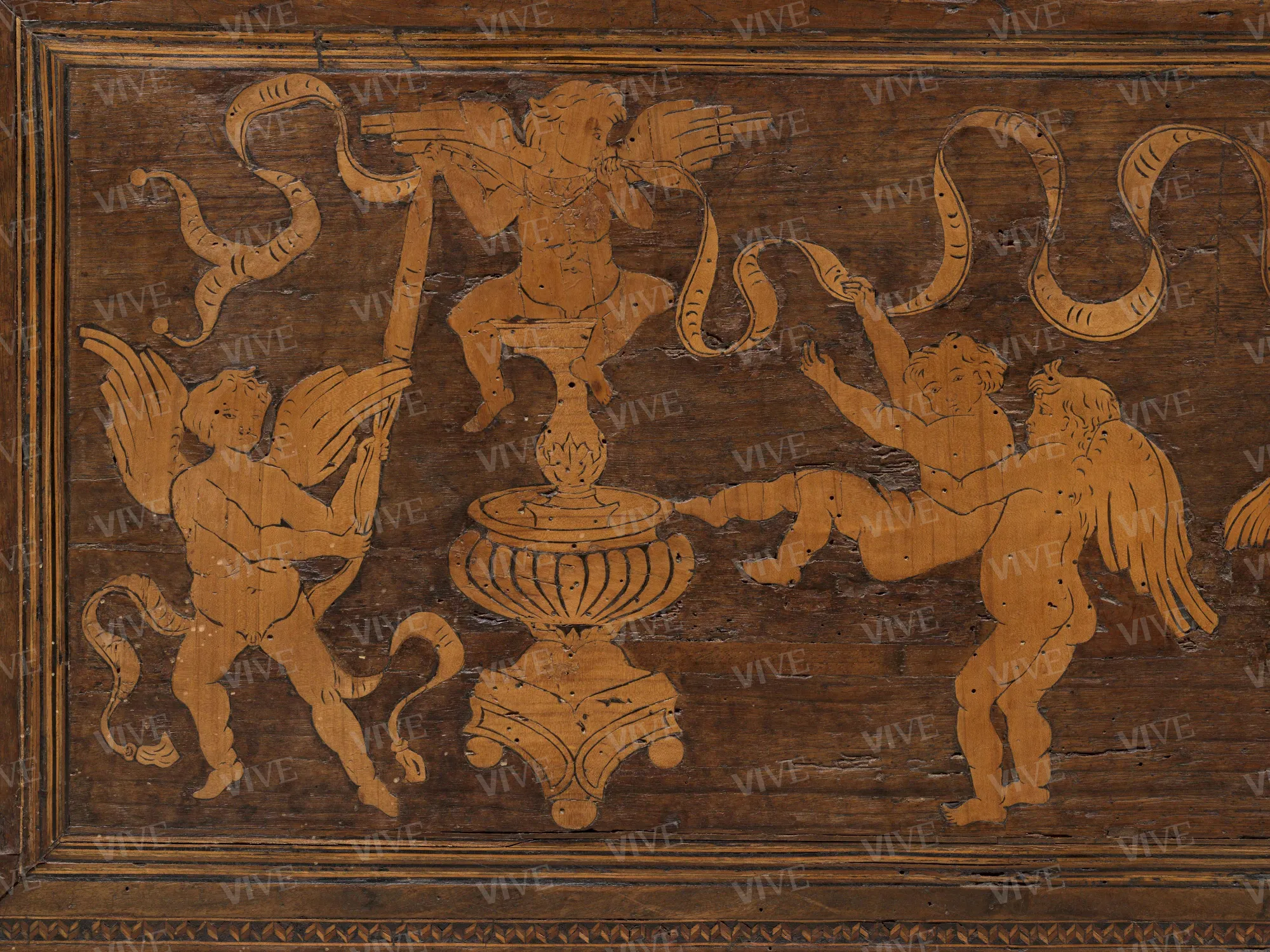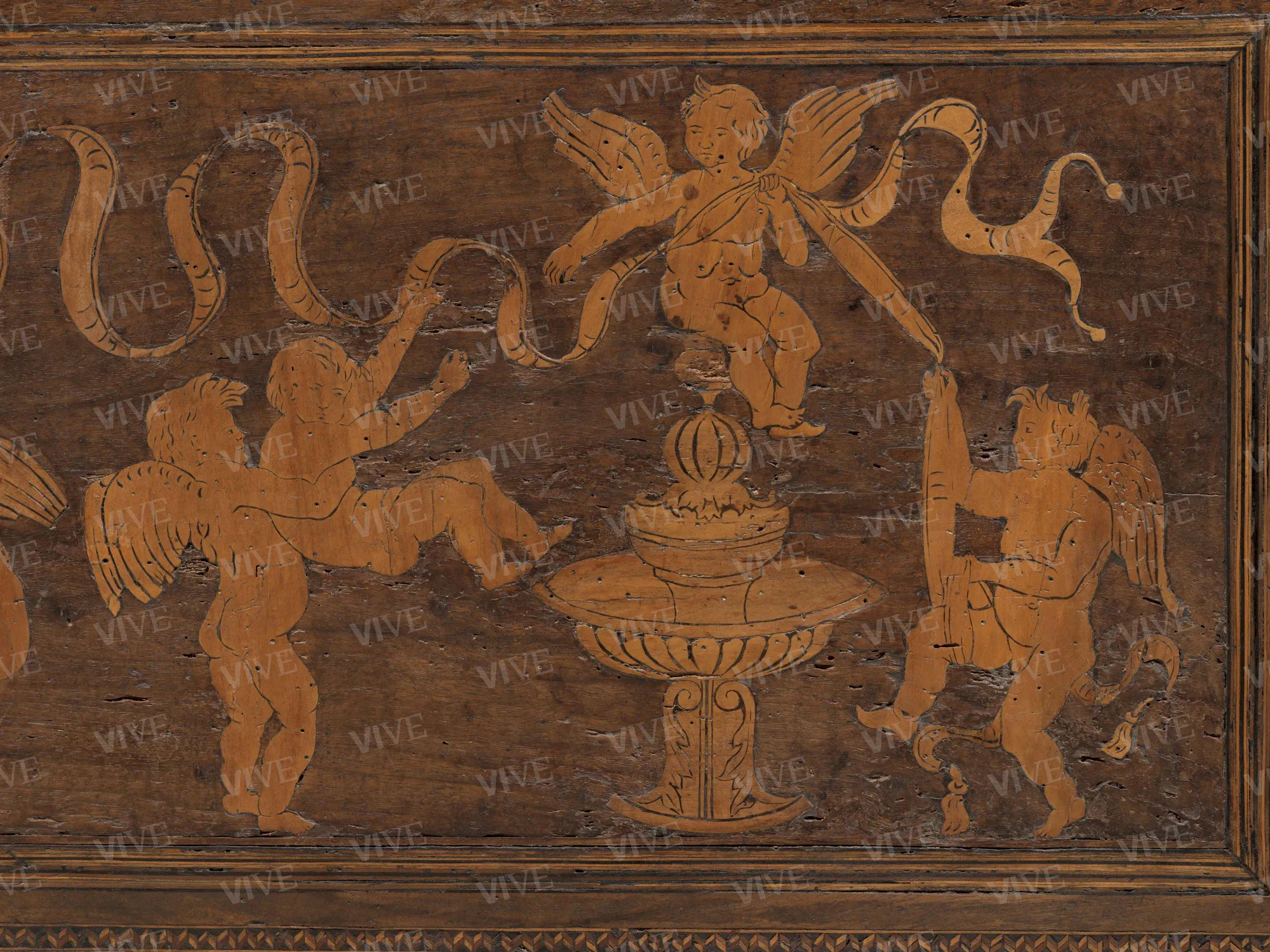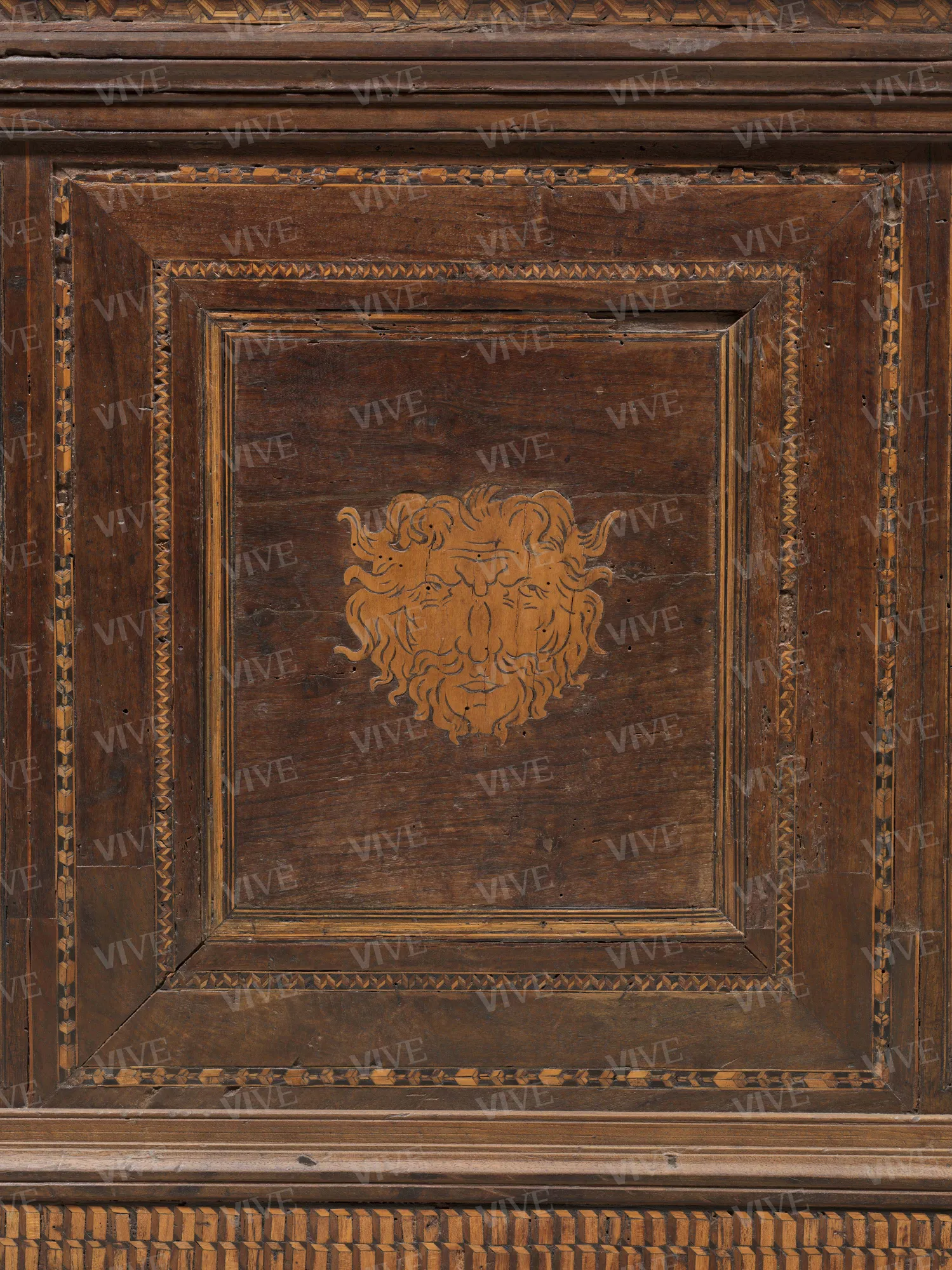Display Cassone
Tuscan milieu 1490-1499
This late fifteenth-century cassone, belonging to the so-called sarcophagus type, was intended for display purposes. It was originally utilized to showcase objects placed on the cabinet. The central presence of the owner’s family coat of arms, surrounded by playing putti rendered through profiled “a buio” wooden intarsia, confirms its representative character.
This late fifteenth-century cassone, belonging to the so-called sarcophagus type, was intended for display purposes. It was originally utilized to showcase objects placed on the cabinet. The central presence of the owner’s family coat of arms, surrounded by playing putti rendered through profiled “a buio” wooden intarsia, confirms its representative character.
Details of work
Catalog entry
The cassone exhibits a pseudo-architectural structure, featuring a pedestal with a continuous base, simplified corner pilasters without capitals, and a complete entablature. The lockable flip-up lid has a molded crowning, characteristic of the “sarcophagus” or “urn” type. The central band on the sides is bordered by several panels: the larger one at the front displays an unidentified coat of arms within a garland of flowers and fruit, flanked by two symmetrical groups of winged putti engaged in playful activities around fountains and holding a ribbon. The side panels are adorned with heads of scowling fauns. These figurative elements are achieved using the “a buio” intarsia technique, which involves inserting large wooden tesserae corresponding to the outlines, detailed with a network of stuccoed grooves to graphically represent the subject profiles.
In contrast, other parts of the cassone are decorated with “a toppo” intarsia, employing prefabricated tesserae with geometric themes, created by cutting sections from a composite bundle of different strips. This results in a diverse range of motifs, including small perspective parallelepipeds on the pedestal, “helical” or “zig-zag” frets framing the front panel, and octagonal strips in the frieze and the lid. In some instances, the wooden fragments have become detached, leaving empty recesses. The decorative motif on the front, which appears in other contemporary painted and inlaid furniture, suggests that this cassone from the Museo di Palazzo Venezia likely originates from Tuscan, particularly Florentine, craftsmen of the fifteenth century (Hermanin 1948, pp. 53, 364; for a similar example in Palazzo Corsini in Florence; Pignatti 1961, p. 36, fig. A), rather than the sixteenth (Calzona 2009, p. 124).
The extensive use of the aforementioned profiled intarsia technique, however, suggests a chronological advancement towards the latter part of the fifteenth century. The cassone is currently exhibited as part of the visitor itinerary at the Museo di Palazzo Venezia, and has played a prominent role in the museum’s exhibitions since its acquisition in 1921. Notably, it appears in several of Federico Hermanin’s early photographs of the museum’s settings, preserved in the historical archive of the Museo di Palazzo Venezia. It can be seen in the Room of the Labors of Hercules in the Appartamento Barbo, surmounted by the Bust of Paul II (inv. 4057). This use of the cassone as a support for a sculpture reflects meticulous philological research regarding its original function: the cassone was originally created to display precious objects that were typically placed on it.
Lorenzo Mascheretti
State of conservation
Good.
Coats of arms, emblems, and marks
On the front center, an unidentified coat of arms with three bezants and a sash.
Provenance
Florence, E. Testa, before 1921;
Rome, Museo Nazionale di Palazzo Venezia, purchased 1921.
References
Hermanin Federico, Il Palazzo di Venezia, Roma 1948, pp. 53, 364;
Pignatti Terisio, Mobili italiani del Rinascimento, Milano 1961, p. 36;
Ghelardini Armando, Il mobile italiano dal Medioevo all’Ottocento, Milano 1970, fig. 17;
Colombo Silvano, L’arte del legno e del mobile in Italia, Milano 1975, fig. 178;
Calzona, in Barberini Maria Giulia, Sconci Maria Selene (a cura di), Guida al Museo Nazionale del Palazzo di Venezia, Roma 2009, p. 124, cat. 140.

